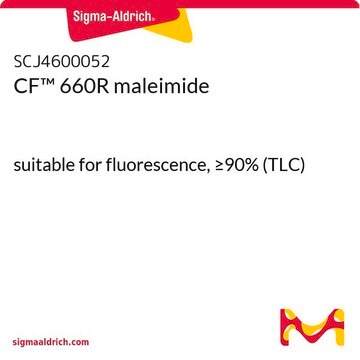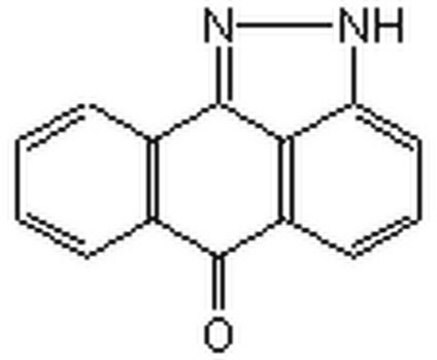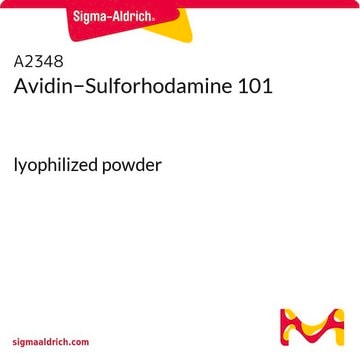Kluczowe dokumenty
S3388
Sulforhodamine 101 acid chloride
Technical grade
Synonim(y):
Sulforhodamine 101 sulfonyl chloride
About This Item
Polecane produkty
Formularz
powder
skład
Dye content, ~75%
zanieczyszczenia
~1 mol/mol chloroform as solvent of crystallization
rozpuszczalność
methanol: 10 mg/mL
fluorescencja
λex 586 nm; λem 605 nm in H2O
Zastosowanie
diagnostic assay manufacturing
hematology
histology
temp. przechowywania
−20°C
ciąg SMILES
[O-]S(=O)(=O)c1cc(ccc1C2=C3C=C4CCC[N+]5=C4C(CCC5)=C3Oc6c7CCCN8CCCc(cc26)c78)S(Cl)(=O)=O
InChI
1S/C31H29ClN2O6S2/c32-41(35,36)20-9-10-21(26(17-20)42(37,38)39)27-24-15-18-5-1-11-33-13-3-7-22(28(18)33)30(24)40-31-23-8-4-14-34-12-2-6-19(29(23)34)16-25(27)31/h9-10,15-17H,1-8,11-14H2
Klucz InChI
MPLHNVLQVRSVEE-UHFFFAOYSA-N
Szukasz podobnych produktów? Odwiedź Przewodnik dotyczący porównywania produktów
Opis ogólny
Zastosowanie
Powiązanie
Hasło ostrzegawcze
Danger
Zwroty wskazujące rodzaj zagrożenia
Zwroty wskazujące środki ostrożności
Klasyfikacja zagrożeń
Carc. 2 - Eye Irrit. 2 - Repr. 2 - Skin Irrit. 2 - STOT RE 1
Kod klasy składowania
6.1D - Non-combustible acute toxic Cat.3 / toxic hazardous materials or hazardous materials causing chronic effects
Klasa zagrożenia wodnego (WGK)
WGK 3
Temperatura zapłonu (°F)
Not applicable
Temperatura zapłonu (°C)
Not applicable
Wybierz jedną z najnowszych wersji:
Masz już ten produkt?
Dokumenty związane z niedawno zakupionymi produktami zostały zamieszczone w Bibliotece dokumentów.
Klienci oglądali również te produkty
Active Filters
Nasz zespół naukowców ma doświadczenie we wszystkich obszarach badań, w tym w naukach przyrodniczych, materiałoznawstwie, syntezie chemicznej, chromatografii, analityce i wielu innych dziedzinach.
Skontaktuj się z zespołem ds. pomocy technicznej












